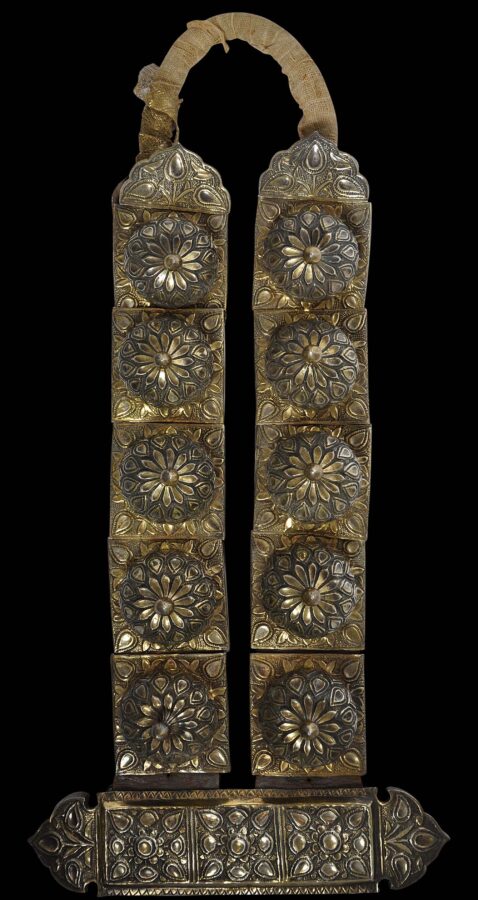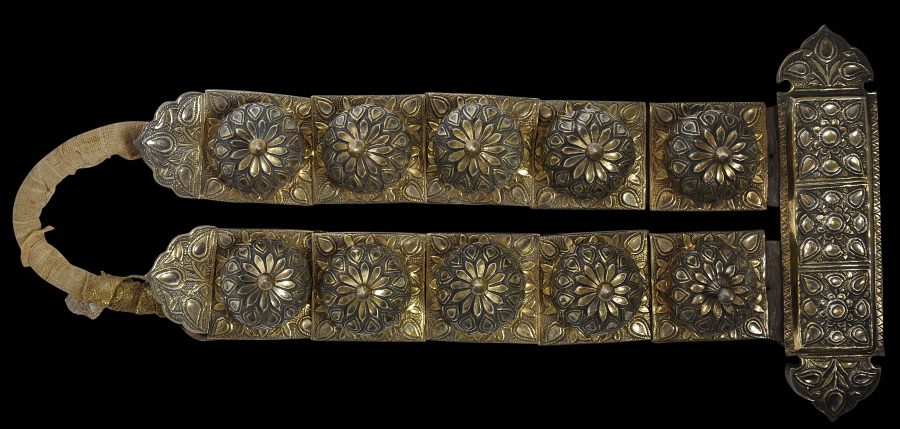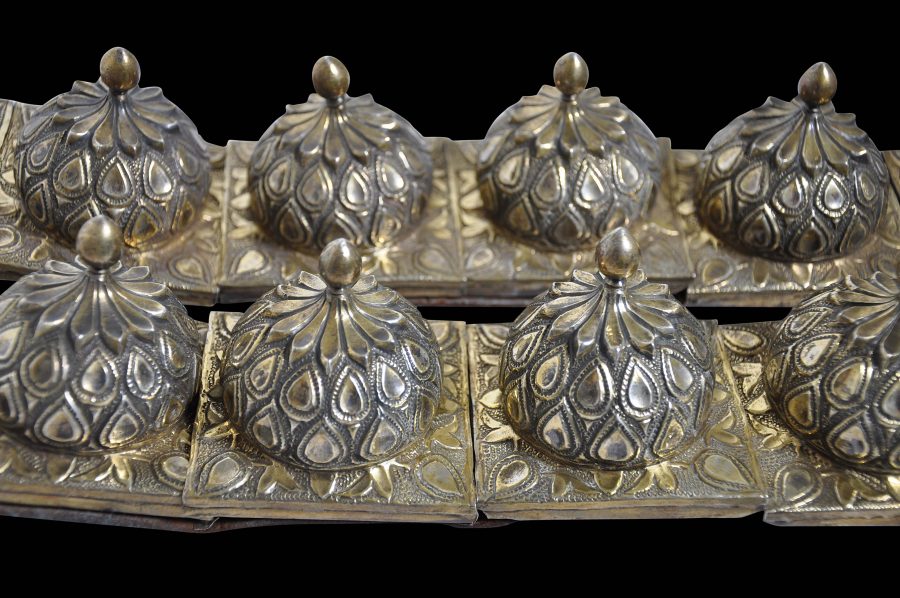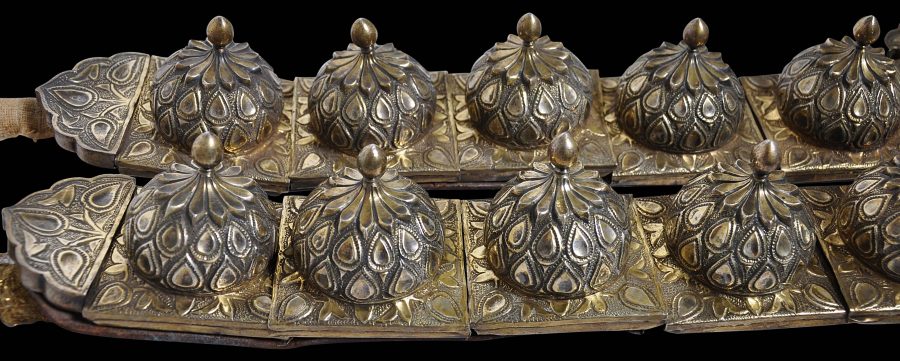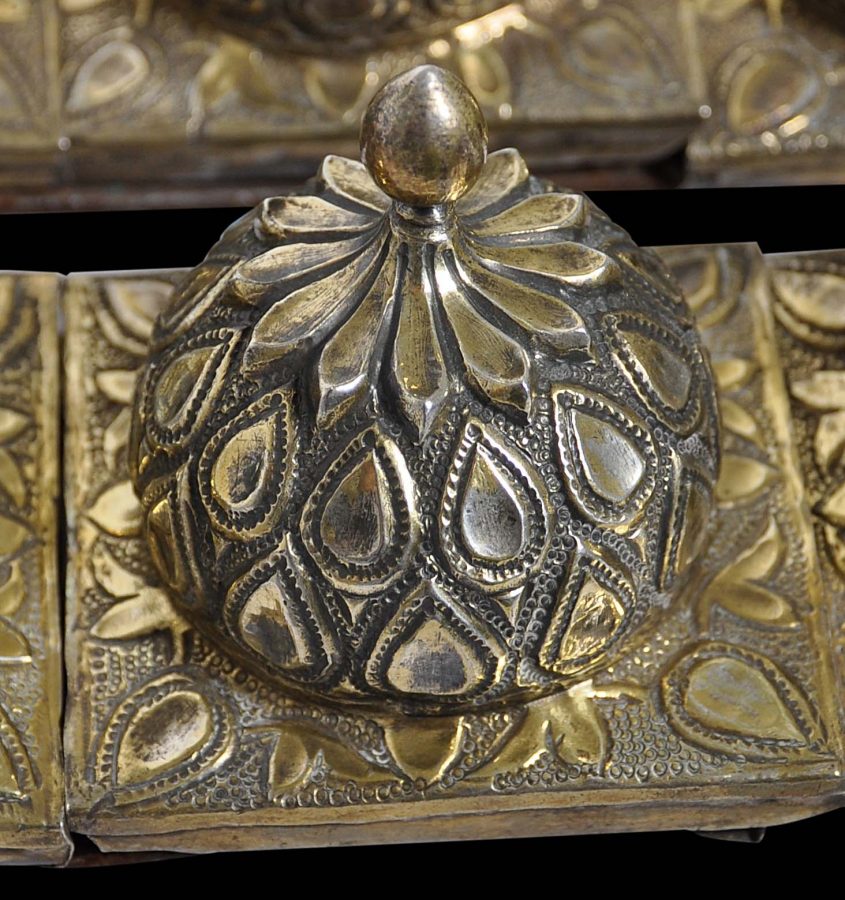Enquiry about object: 2462
Silver-Gilt Mughal Horse Trappings
India 18th-19th century
length/height: 51cm, width: 23.5cm, weight: 1,222g
Provenance
UK art market
This spectacular set of gilded silver horse trappings would have been used for a Muslim wedding in northern India, in either the 18th or 19th centuries, or possibly in association with a procession of an Islamic ruler. The set comprises thirteen separate plaques in solid silver that retain remnants of gold plating (gilding). The plaques have been attached to a leather strap (suggesting their Muslim rather than Hindu provenance.)
Each of the plaques is decorated with a tear-drop pattern designed to shimmer like costly, flat-cut diamonds, against a ring-mat background. An eighteenth century set of pandan boxes and trays, rosewater sprinklers and scent holders in the Clive Collection at Powis Castle is decorated in the same fashion (see Zebrowski, 1997, p. 48, and Archeret al, 1987, p. 58).
The main plaques, numbering ten in total, comprise architectural-like domes with bud finials that rise from square plates, and are undoubtedly influenced by northern Indian Islamic architecture in their form.
The condition of the set is fine given their age and use. There is the expected minor denting but the trapping is showy, much of the gilding remains bright, and overall is a particularly attractive, stable ensemble.
References
Archer, M. et al, Treasures from India: The Clive Collection at Powis Castle, The National Trust, 1987.
Zebrowski, M., Gold, Silver & Bronze from Mughal India, Alexandria Press, 1997.


